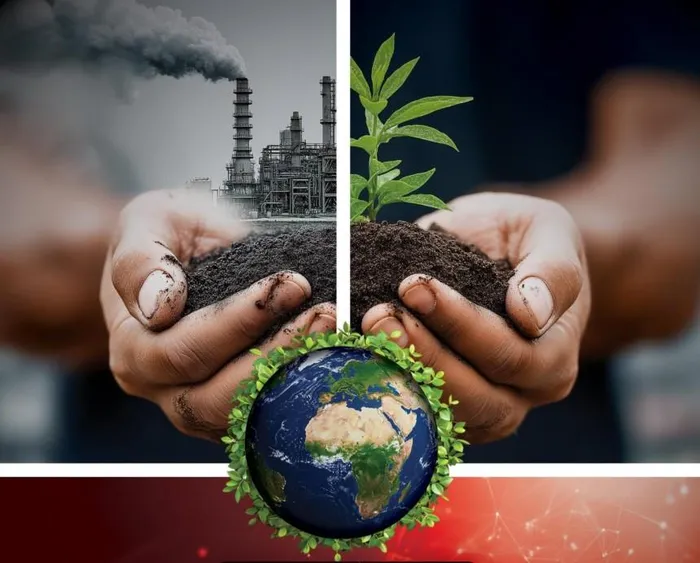Treasury moves to unlock South Africa’s carbon credit market
CARBON CREDITS

By reducing administrative barriers and enhancing the role of financial institutions and regulatory bodies, Treasury believes that these reforms would develop a resilient and high-integrity secondary market for carbon credits.
Image: Supplied
The National Treasury has unveiled a bold plan to strengthen South Africa’s carbon credit market, paving the way for greater private investment in emissions reduction and low-carbon projects as part of the country’s transition to net zero.
The consultation paper, Developing the South African Carbon Credit Market, released on Wednesday outlines a comprehensive framework to expand the carbon offset system and improve market integrity, regulation, and liquidity.
It aims to make South Africa a leading destination for climate finance in Africa by modernising market architecture, clarifying the legal status and financial regulations of carbon credits, linking domestic trading with international carbon markets and stimulating investment in South Africa’s low-carbon projects.
By reducing administrative barriers and enhancing the role of financial institutions and regulatory bodies, Treasury believes that these reforms would develop a resilient and high-integrity secondary market for carbon credits.
Treasury said the reforms would complement the second phase of the Carbon Tax, first introduced in 2019, and respond to growing demand for carbon credits from both compliance and voluntary buyers.
The plan comes as South Africa intensifies efforts to meet its Nationally Determined Contribution (NDC) under the Paris Agreement, targeting a reduction in greenhouse gas emissions to between 350 and 420 MtCO₂e by 2030.
South Africa has committed to reducing carbon emissions. The country has adopted a market-based strategy, setting a notable international precedent.
Market-based economic instruments, such as the carbon tax introduced in 2019, have incentivised businesses to reduce carbon emissions by imposing financial penalties on greenhouse gas emissions.
“A well-functioning carbon market can accelerate decarbonisation while reducing the overall cost of mitigation,” the Treasury said. “The goal is to create a market that is credible, transparent, and accessible to both domestic and international participants.”
The paper identifies seven key obstacles holding back growth in the carbon market, including policy uncertainty, costly certification processes, weak trading infrastructure, and the absence of domestic accreditation bodies.
It also highlights regulatory ambiguity over whether carbon credits qualify as financial instruments under South African law.
To address these, Treasury proposes:
Legislative clarity on the legal and financial nature of carbon credits to enable ownership, transfer, and listing.
Upgrading the Carbon Offset Administration System (COAS) to function as a robust registry allowing for trading, clearing, and settlement.
Developing domestic accreditation capacity, allowing the South African National Accreditation System (SANAS) to validate and verify projects locally, reducing costs.
Introducing local crediting standards tailored to South African conditions rather than relying solely on costly international systems like Verra or Gold Standard.
Reforming capital and regulatory frameworks so that banks and investors can hold and trade carbon credits without punitive capital requirements.
Improving exchange control rules to enable cross-border trading and participation in global markets.
Integrating the market with Article 6 of the Paris Agreement, allowing South Africa to trade internationally transferred mitigation outcomes (ITMOs) with other countries.
Since 2008, South Africa has generated about 33 million tons of carbon credits, most from industrial and renewable energy projects.
However, annual supply of about 4 MtCO₂e still lags far behind compliance demand estimated at 12 MtCO₂e, largely due to high transaction costs and regulatory uncertainty.
Treasury expects demand to surge after 2026 when the government plans to raise carbon offset allowances by five percentage points. Inclusion of state utility Eskom, currently exempt from carbon tax, could triple demand to more than 30 MtCO₂e per year.
By clarifying regulation and expanding trading infrastructure, Treasury hopes to attract both domestic and global investors, stimulate job creation, and position South Africa as a hub for high-integrity carbon markets in Africa.
The initiative will also align with ongoing work by the World Bank, the Financial Sector Conduct Authority (FSCA), and local banks to design compliant, secure market systems.
Stakeholders have been invited to comment on the proposals by no later than 1 December 2025 through an online consultation process.
“The reforms aim to move the carbon market from policy uncertainty to policy certainty,” Treasury said. “By doing so, South Africa can unlock billions in private climate finance and play a leading role in shaping Africa’s green industrial future.”
BUSINESS REPORT